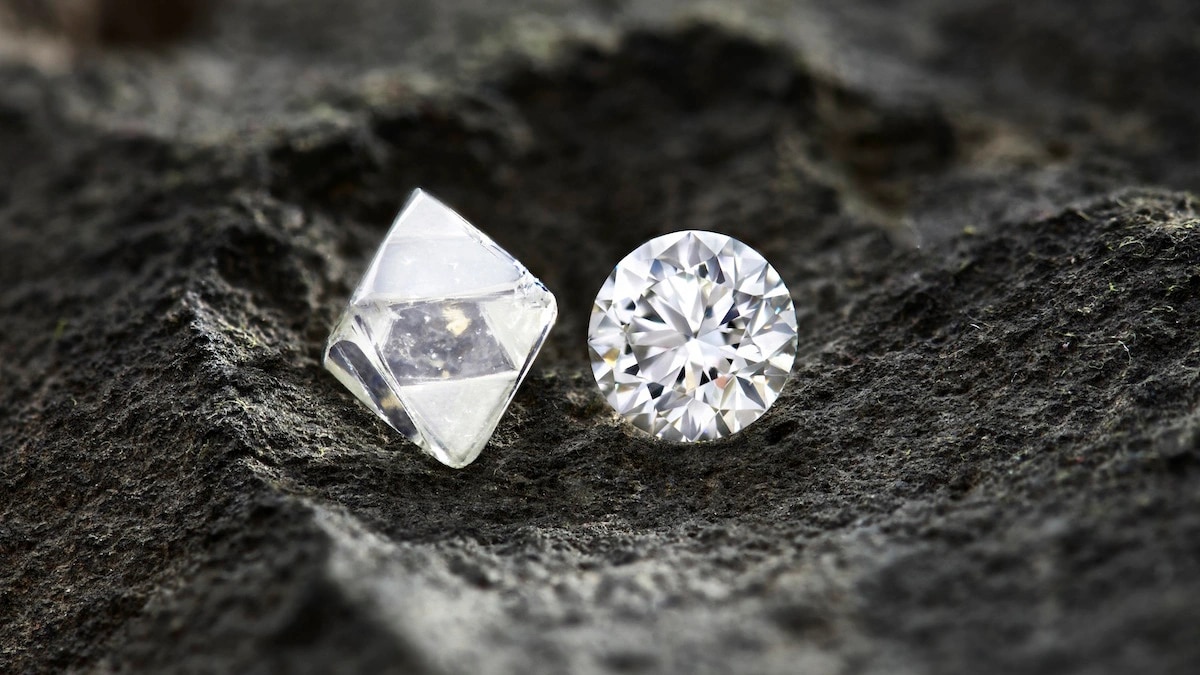
The environmental reality of natural diamonds and their much debated alternate
Lab-grown diamonds may not be as sustainable as you think.


Marylyn Monroe once said, “Diamonds are a girl’s best friend.” Diamonds can be interpreted as many things—symbol of love and commitment and a form of investment. But their significance goes beyond culture and sentiment. For a long time now, fashion and diamonds have had a powerful relationship with each other. Whether used as a form of embellishment or as pieces of fine jewellery to complete a look, they’ve been in and out of trend but have forever been considered to be timeless and much-adored statements of possession.
Still, like two sides of the coin, the gemstone has been the subject of many a controversy, debate, and discussion over the years. There are many stubborn myths surrounding the natural diamond industry that stem from incorrect information around the mining industry’s past, and some which have been recently created. While the industry continues to evolve in its endeavour to fill data gaps and engage in feedback, today laboratory-grown diamonds are often sought to be an alternative to natural diamonds. Yet, the space appears to be filled with misinformation and misconceptions. So, the Natural Diamond Council (NDC) conducted extensive research and analysis to debunk myths about natural diamonds and lab-grown diamonds. Here we let you in on some of the truths.
Lab-grown diamonds and sustainability

Here’s one thing we know for sure: not all laboratory-grown diamonds are sustainable, and it is largely due to the manufacturing process, which requires extreme temperatures, similar to 20 per cent of the sun’s surface and is also energy-consuming. There are two main methods of producing lab-grown diamonds namely—high pressure, high temperature, and Chemical Vapor Deposition (CVD), which require temperatures of around 1500 degrees C and also use a considerable amount of water for their cooling systems. As far as data for carbon footprint is concerned, very few companies reveal such information. However, Sphera (a Germany-based software company) has estimated that the average emissions per polished carat produced by the CVD process can vary from 260kg C02e to 612kg CO2e in India.
Most lab-grown diamond brands claim that man-made diamonds have low, neutral or even a negative carbon footprint, the answer depends upon various factors such as geography, productivity of the mine, and use of renewable energy. The NDC report reveals that over 60 per cent of the laboratory-grown diamonds are mass-produced in countries such as China and India where 63 per cent and 74 per cent of their grid electricity is generated from coal, a natural resource which the two nations heavily depend on.

Another common misconception about laboratory-grown diamonds is that they are mining-free. However, this is untrue since synthetic diamonds, too, have their own requirements of graphite and metals, both of which originate from mining.
This is not to say all laboratory-grown diamonds are unsustainable. In fact, the NDC report states that just as natural diamond companies, some lab-grown diamond companies also use renewable source of energy.
Steps taken by the natural diamond industry for a sustainable future

According to the NDC report, many factors, such as availability of clean energy at mine locations, production and yield capacity of the mine, contribute to carbon emissions recorded by the natural diamond industry. It is estimated that for a one carat polished natural diamond, the emissions are 106.9kg CO2e. It is also important to note that every diamond mining operation has different environmental impacts involved depending on the type of mining.
In the last few years, the natural diamond industry has been taking several measures to decarbonise and reduce its carbon footprint. NDC members are developing renewable energy projects, investing in programmes to sequester carbon, and are also involved in other research-based projects to find nature-based solutions. The De Beers Group recently announced its partnership for its first ever nature-based climate solution wherein the organisation invested $2 million in Kelp Blue, a company that plants kelp forests around the world to improve the health of ocean life. NDC members are also involved in unique programs to sequester carbon such as by using kimberlite, the rock where diamonds are found.

The report reveals that 99 per cent of the waste produced by NDC members is rock, which is disposed of on-site and is eventually reclaimed as part of the landscape during the mine closure and rehabilitation. Along with this, 84 per cent of the water used in diamond recovery is recycled. The report shares that the De Beers Group has certain waste management practices in place such as separating the waste generated at the source across categories such as metals, glass, and plastic. Petra Diamonds recorded in 2022 that it had recycled 85 per cent of waste from its local operations.

NDC members are also actively involved in conservation projects and off-setting efforts that help remove carbon from the atmosphere. A research conducted by an environmental consultancy addresses the efforts taken by NDC members towards the United Nations Sustainable Development Goal 15—Life on Land. As part of this effort, NDC members protect about four times the land they use for mining. An area of over 2,020 sq. km has been conserved through biodiversity conservation and wildlife protection. Other initiatives have included the translocation of nearly two hundred elephants to Mozambique and even a bee pollinator conservation project, which was started by Petra Diamonds where bees are removed from the mining site and taken to a safer environment.
NDC members, De Beers Group and Rio Tinto are also currently collaborating on a project to research, identify, and reimagine life after diamond mining in Canada, which focuses on socio-economic planning with the support of indigenous governments, mining companies, and conservation bodies.
What one should consider while making a choice between the two
The natural diamond industry is relentlessly striving to implement a chain of custody through traceability initiatives that are enabled by technology to ensure diamonds are ethically sourced and real. For those consumers who want to inculcate conscious and sustainable practices in their purchases, we’d recommend requesting the brand for the carbon-footprint data, right from the source to the manufacturing. We’d urge you to ask your jeweller the right questions such as whether they have the certification from the Responsible Jewellery Council or any other third party and also research whether the jeweller is a member of industry standards and initiatives. All in all, here’s one thing we know for sure: natural diamonds will always be the right choice not only for a long-term investment but an expression of love, faith and trust.
Lead Image Caption: Rough and polished natural diamonds. Lead Image Credits: Natural Diamond Council
Visit the NDC website to know more.










